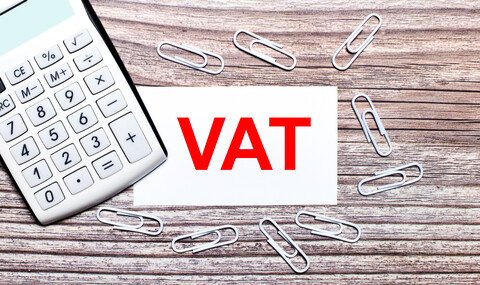For Amazon sellers, working out how to calculate VAT on their Amazon sales can be challenging and it’s incredibly important to get this right in order to get a good hold of your profitability. But we’re here to help.
Here’s our guide to calculating VAT on your Amazon sales.
What is VAT for UK Amazon Sellers?
VAT, or Value Added Tax, is a tax added to the sales price of products and services sold by VAT-registered traders in the EU and the UK. The VAT added to the cost of products is passed on to the relevant tax authorities when the business files its VAT returns.
If you sell products in any European country, then you may need to register for VAT in each country you sell in depending on where you are fulfilling from and how much you are selling.
If you’re a UK-based business and selling only to customers in the UK with your products fulfilled within the UK, then you won’t need to register for VAT until your turnover reaches the VAT threshold (currently £85,000). However, you can register voluntarily before you reach the threshold as in some cases this will be beneficial (e.g. if you are selling primarily zero-rated products such as children’s clothes).
How does VAT work for Amazon Sellers?
VAT is based on the principle that businesses can recover the VAT they pay on purchases and charge VAT on their own sales. The end consumer pays the VAT as part of the purchase price. You can only recover VAT paid and charge VAT on sales if you are VAT registered.
-
B2C Customers
If you’re selling products on Amazon directly to consumers, then your prices will need to be inclusive of VAT.
-
B2B Customers
Amazon launched its own VAT Calculation Service (VCS) in July 2019. This provides Amazon sellers with a quick and easy way to calculate the VAT on their B2B sales.
You’ll need to register to use the service, and it will then calculate your sales price without VAT. This price will then automatically be displayed to customers using Amazon business accounts. It will not be visible to customers using a personal account, instead, they will see the price including VAT.
When a business customer buys your products, they will automatically receive a VAT invoice through the VCS. This therefore significantly reduces the administrative burden of issuing VAT invoices to your business customers.
What is the Current Rate of VAT in the UK?
VAT rates vary from country to country, and between certain types of products.
In the UK, the standard rate of VAT is currently 20%. That means that, for the majority of the products you sell on Amazon, you will have to charge 20% on top of your sales price.
So, if you’re selling a product for £100+VAT, for example, you’ll charge your customers £120 in total – £100 for the cost of the product and £20 VAT.
The reduced rate for qualifying products is 5% and is applicable to a limited range of goods such as children’s car seats, mobility aids and nicotine patches.
Some products will also qualify as zero-rated products such as basic food products and children’s clothing. If you are selling zero-rated products and your sales exceed the £85,000 threshold then you will still need to register for and file VAT returns, even though there won’t be any VAT to pay on your sales. This will in fact be beneficial to your business as you will be able to reclaim VAT on your administrative costs.
How to Calculate VAT on Amazon Sales – Standard Rate
The majority of products will come under the standard VAT rate.
Let’s say you want to receive £10 from selling a product. Under the standard rate of 20%, the VAT will be £2, meaning it will be sold on Amazon for £12.
However, it’s also important to keep in mind that the VAT is deducted from the sales price before you pay any Amazon fees and charges.
So, if you’re working backwards from your final sales price, divide the final figure by 6 and this will give you the amount of VAT you will need to pay to HMRC out of your sales price..
How to Calculate VAT on Amazon Sales – Flat Rate or Non-Standard Rate Goods
The amount of VAT to be paid on reduced-rated goods can be calculated by dividing the final sales price by 21.
For Amazon sellers registered under the flat rate VAT scheme, the way your VAT liability is calculated works a little differently. Under the flat rate scheme, you are not able to reclaim VAT on your expenditure (with the exception of capital expenditure over £2,000). You instead pay a flat rate of VAT as a % of your gross sales.
For most e-commerce businesses the Flat Rate Scheme percentage will be 7.5% with a 1% discount for the first year. So if you’re selling a standard-rated product for £100, you’ll add VAT of £20 as usual to give you a gross selling price of £120. 7.5% of the gross selling price is then due to HMRC so in this case £9.
Accountants for Amazon Sellers
VAT for Amazon sellers isn’t always easy to navigate. But we’re here to help. As specialist Amazon accountants featured on the Amazon Service Provider Network, we can help you with all aspects of managing your Amazon seller accounts, including VAT.

